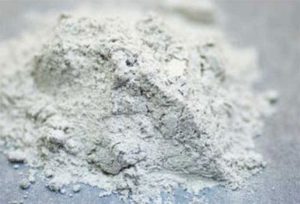When considering doing a cocaine detox, it is highly advisable to detox in a medically supervised and well-monitored setting to ensure you are comfortable and safe throughout the entire process. This is because cocaine detox symptoms can differ for each person depending on how long you used cocaine and how much of it you used.
Addiction treatment for cocaine abuse or addiction disorder typically starts with medical detox. This phase of the rehabilitation process involves trained medical professionals and addiction specialists who assist as you eliminate the drug from your body and experience withdrawal.
A cocaine detox helps you break down and eliminate any harmful addictive substances present in your body, allowing it to resume normal functioning without them. This process also helps to decrease the drug’s dangerous effects on your body as it leaves your system.
Trying to stop using cocaine suddenly without medical help can be dangerous, and it is not advisable. This is known as quitting cold turkey, which can increase the chances of having an uncomfortable reaction after getting used to having cocaine in your body. This can give rise to unpleasant withdrawal symptoms, resulting when the brain reacts to chemical changes caused by the absence of the drug.
Withdrawal symptoms experienced during cocaine detox can include:
 Suicidal thoughts
Suicidal thoughts- Depression
- Anxiety
- Irritability
- Cravings
- Headaches
- Nausea
- Sweating
- Exhaustion
- Shivering and shaking
Since the process can be potentially dangerous and incredibly uncomfortable, it is ideal to have someone who understands medical detox monitoring throughout. Detoxing in a comfortable environment also helps the patient to work through the discomfort and pain of cocaine withdrawal. Specialized detox centers provide access to all the basic levels of care to safely guide recovering individuals through the withdrawal process while providing staff on hand to offer support.
Before going through medical detox, individuals will undergo a medical assessment to assess the extent of their substance use disorder. This will help the treatment team and medical care providers determine what to recommend for the patient. They will develop a customized treatment plan based on the duration and severity of your cocaine use. Other contributing factors include your current overall health and medical history.
Psychological Problems Experienced During Cocaine Detox
 Most people who go through cocaine withdrawal will have their symptoms peak and diminish within one or two weeks. However, individuals with poly-drug abuse problems or who have been abusing cocaine for a long time may experience more severe withdrawal symptoms, which can stay on for months and even years.
Most people who go through cocaine withdrawal will have their symptoms peak and diminish within one or two weeks. However, individuals with poly-drug abuse problems or who have been abusing cocaine for a long time may experience more severe withdrawal symptoms, which can stay on for months and even years.
Such recovering users might get continuous, recurrent drug cravings and a possible diagnosis of major depression. Considering how intense and unpleasant the symptoms can be, recovering cocaine addicts are at a higher risk for relapse when they attempt to detox without professional intervention or medical assistance.
At times, people who are experiencing cocaine withdrawals can get powerful hallucinations or delusions. This can also increase their likelihood of self-harm or harming others if they don’t conduct their cocaine detox in a supervised and safe environment.
Medication
During the recovering patient’s medical assessment, the addiction treatment team will determine the best medication to include in the treatment plan to meet their needs. When the patient goes through cocaine detox, the qualified staff will monitor the withdrawal symptoms and administer medication accordingly. You may also be given a replacement medication to help you taper off cocaine safely and comfortably.
The treatment staff will also assess the person for any underlying mental or physical health problems while also checking if there is another drug abuse problem. The patient will be observed during the crash or acute withdrawal phase, which happens at the beginning of cocaine detox. The staff will monitor for any serious health problems during this stage while administering medication for insomnia, muscle pains, and body aches.
Safe Practices During a Cocaine Detox
 It is always best to maintain healthy habits during a cocaine detox to maximize safety and comfort throughout the process. This can include engaging in physical activity or exercise and eating a balanced and nutrient-rich diet. Maintaining one’s health allows the mind and the body to properly deal with the challenges experienced.
It is always best to maintain healthy habits during a cocaine detox to maximize safety and comfort throughout the process. This can include engaging in physical activity or exercise and eating a balanced and nutrient-rich diet. Maintaining one’s health allows the mind and the body to properly deal with the challenges experienced.
People recovering from cocaine abuse or addiction are usually advised to eat and rest as much as possible. This is because the drug is known to repress the user’s appetite, so most people who undertake cocaine addiction treatment tend to be underweight and malnourished.
Keeping your mind occupied with various safe forms of entertainment also helps to distract you from the symptoms you’re experiencing and pass the time. You can dive into reading, listening to music, watching television, or taking evening walks to take your mind off the cocaine detox process.
Stay hydrated by drinking plenty of water and healthy beverages. Most importantly, avoid caffeinated drinks like coffee and stay away from alcohol. Staying in a drug-free environment like a rehabilitation facility can also help you stay clean compared to detox from home. So if you feel you may be dependent on the drug or need extra help, you can check into an outpatient or inpatient program.
During the next stage of withdrawal during cocaine detox, the staff in the treatment facility will keep observing patients or any residual emotional and physical side effects. Social workers, doctors, and therapists will develop a continuous maintenance plan for the patient. This can include attending therapy sessions and establishing programs to avoid relapse with assistance from supportive doctors and therapists.
Once you have completed cocaine detox, you will work with your addiction treatment team and healthcare provider to determine whether an inpatient or outpatient program will address your recovery needs best. The ideal option is that which meets your needs to ensure your best chance for success.



 The preferred method of taking speedball is through intravenous injection. Users would often dissolve cocaine and heroin powder together, then inject it with a syringe into their arms. The intravenous route produces a quick, intense high that many users want.
The preferred method of taking speedball is through intravenous injection. Users would often dissolve cocaine and heroin powder together, then inject it with a syringe into their arms. The intravenous route produces a quick, intense high that many users want. Speedball addiction treatment has similarities to treating other drug addictions. Types of treatment include medical detox, behavioral therapies, and medications. But because speedball addiction is a case of polydrug abuse, there are certain considerations.
Speedball addiction treatment has similarities to treating other drug addictions. Types of treatment include medical detox, behavioral therapies, and medications. But because speedball addiction is a case of polydrug abuse, there are certain considerations. Severity of your addiction
Severity of your addiction



